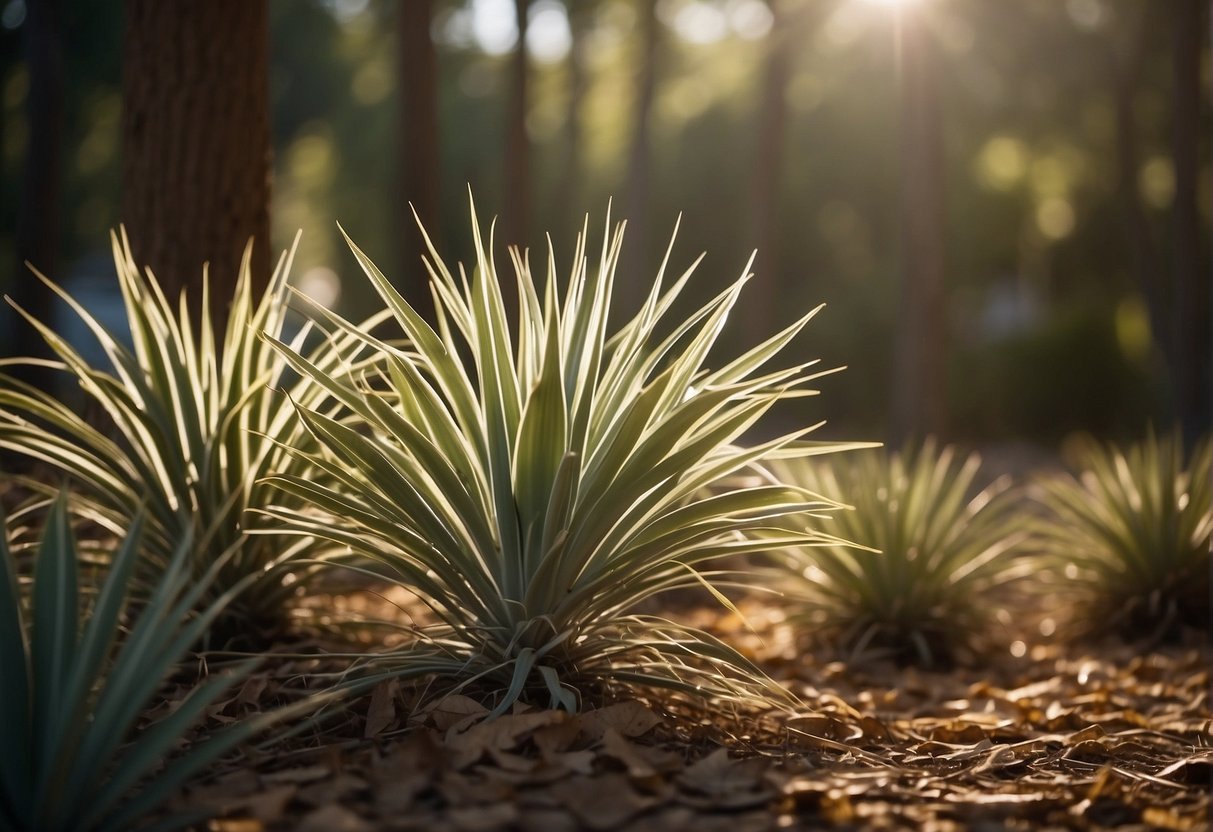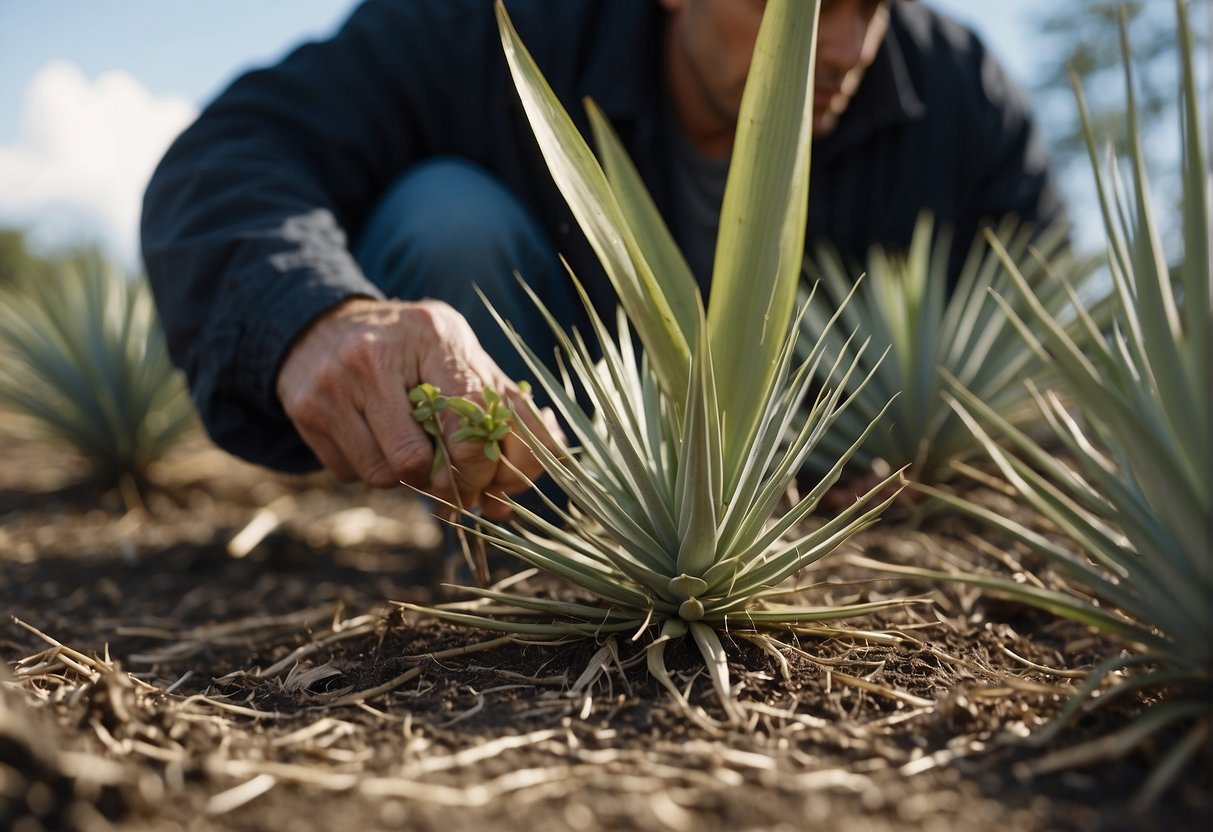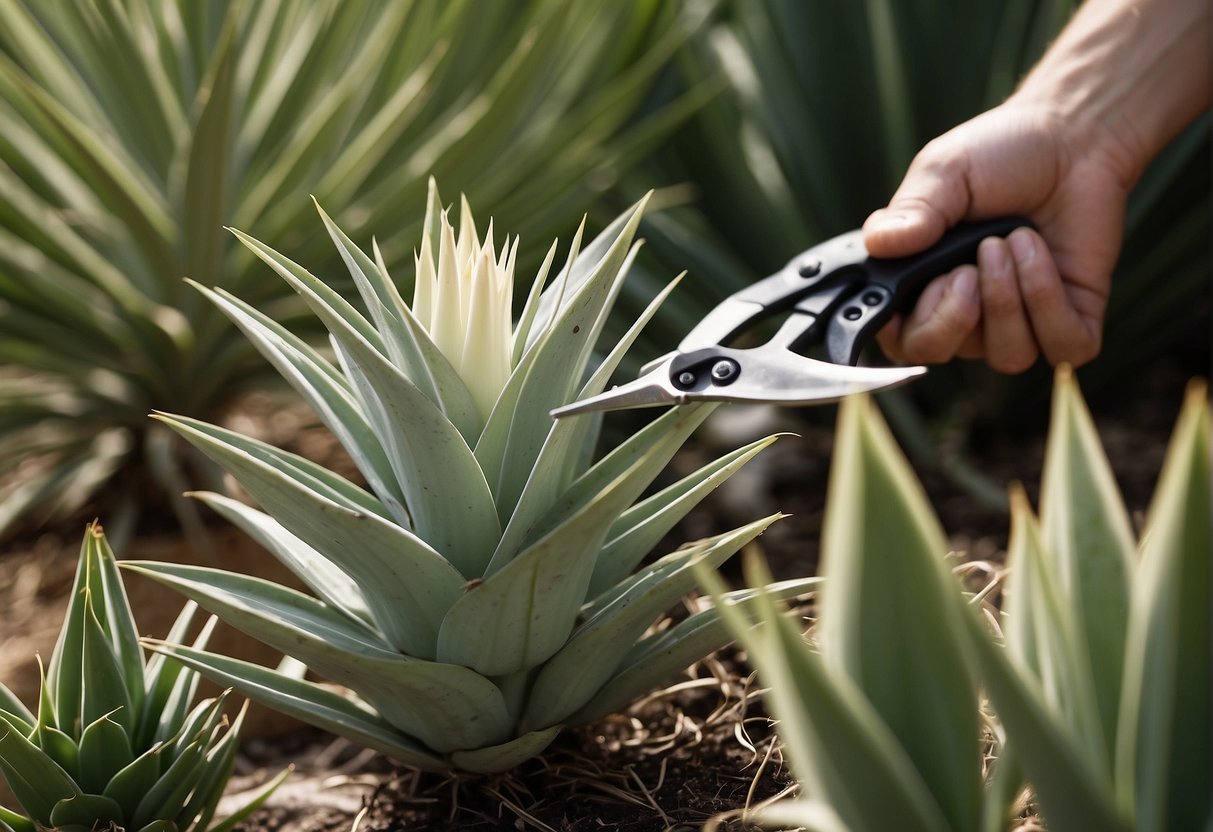If you own yucca plants outdoors, you might be curious about the correct way to prune them efficiently. Properly pruning your yucca plants is crucial for their upkeep, encouraging robust growth while avoiding too much crowding. This piece will outline the necessary actions for pruning your outdoor yucca plants and address common inquiries regarding care for yucca plants.

Understanding yucca plants is important before you start thinning them out. Yucca plants are known for their sharp, sword-like leaves and can grow up to several feet tall. They are hardy plants that can tolerate a range of temperatures and soil types, but they do require proper care to thrive. Thinning out your yucca plants can help to prevent pests and disease, as well as promote new growth and a more attractive appearance.
Thinning out your outdoor yucca plants may seem daunting, but with the right tools and techniques, it can be a simple process. In the next section, we will guide you through the steps you need to take to thin out your yucca plants properly. We will also answer some frequently asked questions about yucca plant care to help you keep your plants healthy and thriving.
Key Takeaways
- Thinning out your outdoor yucca plants is an important part of their care and maintenance.
- Yucca plants require proper care to thrive, and thinning them out can prevent pests and disease.
- To thin out your outdoor yucca plants, follow these simple steps and refer to our FAQs for additional tips.
Understanding Yucca Plants
Yucca plants are a popular choice for outdoor landscaping due to their striking appearance and hardiness. These plants are native to arid regions of North and Central America and belong to the Asparagaceae family. Yuccas are known for their sword-like leaves and tall, branching inflorescences that bear cream or green flowers.
Species and Characteristics
There are over 40 species of yucca plants, each with its unique characteristics. Some yuccas have variegated foliage, while others have leaves with spines or filaments. The size of yucca plants can also vary, with some growing as small shrubs and others reaching heights of up to 30 feet.
Optimal Growing Conditions
Yuccas thrive in full sun and well-draining soil. These plants are adapted to hot and dry conditions, making them an excellent choice for xeriscaping. Yuccas are hardy in USDA zones 4-11 and can tolerate a wide range of temperatures.
Seasonal Yucca Care
During the growing season (spring and summer), yuccas require regular watering and occasional fertilization. In the fall and winter, reduce watering and avoid fertilizing. Yuccas are generally low-maintenance plants, but they may require pruning to remove dead leaves or spent flower stalks.
Common Pests and Problems
Yuccas are relatively pest-free but may be susceptible to scale insects or yucca moths. Scale insects can be treated with neem oil or insecticidal soap. Yucca moths are beneficial pollinators and should be left alone.
Yucca Plant Health and Maintenance
Yuccas are hardy plants that require minimal maintenance. However, it’s important to ensure that the soil is well-draining and not waterlogged. Overwatering can lead to root rot and other problems.
Designing with Yuccas
Yuccas are a versatile plant that can be used in a variety of landscape designs. These plants look great in rock gardens, as a focal point in a mixed border, or as a container plant. Yuccas can also be used to create a desert-themed garden.
Yucca and Wildlife
Yuccas are an important source of food and habitat for wildlife. The flowers of yucca plants are pollinated by yucca moths, and the fruit is eaten by birds and small mammals. Yuccas are also an excellent plant for attracting butterflies and other pollinators to your garden.
Thinning Out Your Outdoor Yucca Plants

If you have outdoor yucca plants that are becoming too crowded or overgrown, it may be time to thin them out. Here are some tips on when to prune yuccas, how to safely prune yucca plants, propagation and managing offsets, and transplanting and potting yuccas.
When to Prune Yuccas
The best time to prune yuccas is in the spring or early summer when the plant is entering its growing season. This will give the plant enough time to recover from the pruning and produce new growth before the winter months.
How to Safely Prune Yucca Plants
When pruning yuccas, it is important to wear gloves and use sharp pruning shears to avoid damaging the plant. Be careful of the sharp leaves and damaged leaves that may be present. To prune yuccas, start by removing any lower leaves that are yellow or brown. Then, cut off any flower stalks that have finished blooming. If you need to prune the trunk, make sure to cut it back to a healthy section of the stem.
Propagation and Managing Offsets
Yuccas can be propagated by stem cuttings, seeds, or by managing offsets. To propagate yuccas from offsets, wait until the offset has grown to at least 4 inches tall before removing it from the parent plant. Plant the offset in well-draining soil and water it regularly until it establishes a root system.
Transplanting and Potting Yuccas
If you need to transplant your yucca plant, choose a container that is at least 2 inches larger than the current pot. Use well-draining potting soil and make sure the plant is positioned at the same depth it was in the previous pot. Water the plant thoroughly after transplanting and make sure it receives plenty of sunlight.
Post-Pruning Care
After pruning your yucca plant, it is important to give it proper care. Water the plant regularly and fertilize it with a balanced fertilizer during the growing season. Make sure the soil is well-draining and the plant receives plenty of sunlight. With the right care, your yucca plant will continue to thrive and grow.
Frequently Asked Questions

What is the proper technique for pruning an overgrown yucca plant?
If your yucca plant has overgrown, you can prune it back to a more manageable size. Start by removing any dead or damaged leaves from the base of the plant. Then, use a sharp pair of pruning shears to cut back the stems to the desired height. Make sure to cut just above a leaf node, as this will encourage new growth.
Can you cut back a yucca to reduce its height, and how?
Yes, you can cut back a yucca to reduce its height. To do this, use a sharp pair of pruning shears to cut the stem just above a leaf node. This will encourage new growth and help to control the height of the plant.
When is the best time of year to trim yucca plants for size control?
The best time of year to trim yucca plants for size control is in the late winter or early spring before new growth begins. This will give the plant time to recover before the growing season begins.
How do you safely remove dead foliage from a yucca without damaging the plant?
To safely remove dead foliage from a yucca, use a pair of pruning shears to cut the dead leaves off at the base of the plant. Be careful not to damage the healthy foliage or the stem of the plant.
What care should be taken when cutting a yucca’s trunk to manage its growth?
When cutting a yucca’s trunk to manage its growth, it is important to use a sharp pair of pruning shears and to make a clean cut just above a leaf node. This will encourage new growth and help to control the size of the plant.
How can I prevent my yucca from growing too tall in the future?
To prevent your yucca from growing too tall in the future, you can prune it back regularly to keep it at a manageable size. You can also plant it in a location with less direct sunlight, as yuccas tend to grow taller in full sun.














